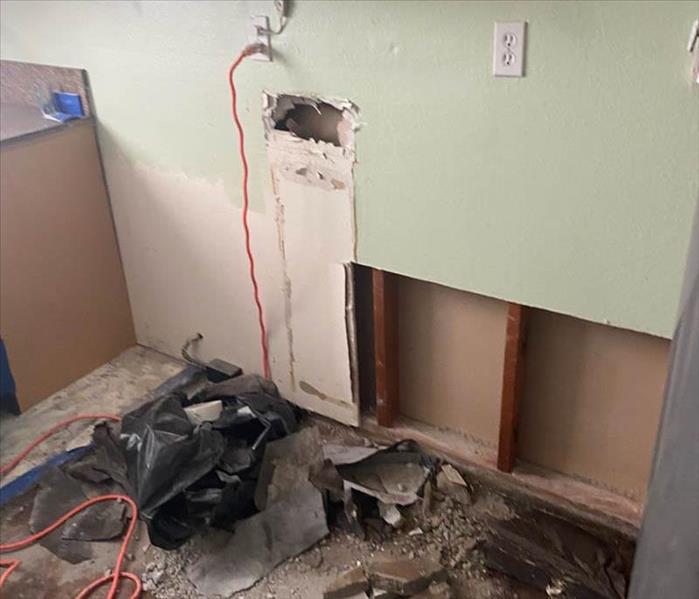A Complete Guide to the Mold Damage Restoration Process
11/16/2023 (Permalink)
Mold damage can be a homeowner's worst nightmare. Understanding the mold damage restoration process is essential to effectively address this issue and restore your home to a safe and comfortable living space. In this blog, we provide a comprehensive guide to the steps involved in the mold damage restoration process.
1. Initial Assessment
The first step in the mold damage restoration process is a thorough assessment of the affected area. This involves identifying the type of mold, the extent of the infestation, and the underlying causes, such as leaks or high humidity. A precise assessment is essential for developing a targeted restoration plan.
2. Isolation and Containment
To prevent the spread of mold spores, containment measures are implemented. Plastic sheeting and negative air pressure systems are used to isolate the affected area and prevent cross-contamination.
3. Mold Removal
The next critical step is the safe and thorough removal of mold from affected surfaces. Moldy materials may need to be discarded, and specialized cleaning techniques are employed to eliminate mold and its spores.
4. Air Filtration
High-efficiency particulate air (HEPA) filtration systems are used to capture airborne mold spores and particles, further preventing the spread of mold during the removal process.
5. Cleaning and Sanitizing
All surfaces and materials in the affected area are meticulously cleaned and sanitized to eliminate any remaining traces of mold and prevent its return.
6. Drying and Dehumidification
Addressing the underlying moisture issue is crucial to prevent future mold growth. Dehumidifiers and air movers are used to ensure the affected area is thoroughly dried.
7. Repairs and Restoration
If structural materials or surfaces were damaged during the mold infestation, repairs and restoration are carried out to return your home to its pre-damage condition.
8. Final Inspection
A final inspection is conducted to verify that all mold has been removed, and the property is safe for occupancy. Any necessary adjustments or additional repairs are made at this stage.
9. Preventative Measures
To ensure mold doesn't return, it's essential to address the root causes of the infestation, such as fixing leaks, improving ventilation, and reducing humidity levels.
10. Documentation
Throughout the restoration process, detailed documentation is maintained, including photographs, moisture readings, and records of all work performed. This documentation is crucial for insurance claims and future peace of mind.
Understanding the mold damage restoration process is the first step to a successful recovery. When dealing with mold, it's essential to work with a professional restoration team like SERVPRO® of Mid-City San Diego. We have the experience, expertise, and resources to efficiently restore your property and ensure it remains mold-free. If you're facing mold damage, don't hesitate to reach out for immediate assistance!





 24/7 Emergency Service
24/7 Emergency Service
